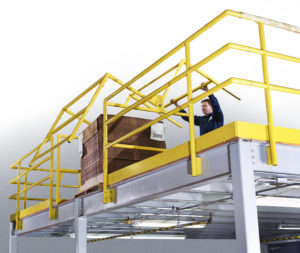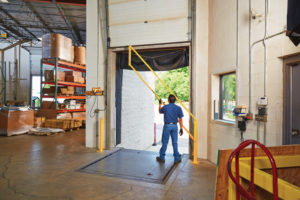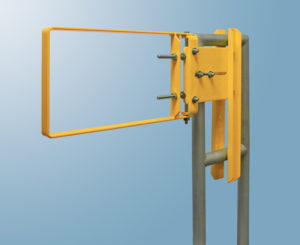
You work hard to make sure that your employees are protected from fall hazards in your industrial facility. You provide them with the proper industrial fall protection safety equipment and training to safely do their jobs. But, if you also allow visitors into your facility to observe your manufacturing process, to learn more about your historic facility, or for any other reason, they need protection as well. Industrial tourism is on the rise—from factories to breweries and beyond—and your visitors are likely unaware of the hidden (and not-so-hidden) hazards normally found in an industrial or manufacturing facility. Even if you don’t have formal tours, having a visitor of any sort means they need to be protected from slips, trips and falls.
What Is Industrial Tourism?
Simply put, industrial tourism is a type of tourism where the destination is an industrial facility. Some types of industrial tourism include tours of breweries, distilleries, wineries, food manufacturing facilities, auto makers, and tours of factories where iconic or popular products are made. People also flock to famous buildings, universities, and other large facilities for educational and/or historical reasons. Since experiences are on the rise when it comes to travel, a lot of companies are looking to monetize this trend for themselves. But if your facility opens its doors to this kind of visitor, you need to be extra vigilant to make sure they’re safe while they are there.
Industrial Fall Protection for Visitors
Since the majority of your facility’s visitors aren’t well-versed in OSHA guidelines for industrial fall protection and have no experience in an industrial facility, there’s a good chance they won’t know how many fall hazards are present. Plus, all the unfamiliar and interesting sights and sounds can be so engaging that they may not even notice a fall hazard until it’s too late. So, it’s up to you to ensure that their visit doesn’t end with an avoidable injury. While the safety procedures you already have in place for your workers are a great start, it’s smart to think about taking additional actions to ensure all your visitors stay safe. Let’s take a look at the steps you should take before you open your doors to the public.
![Worker operating pivoting mezzanine gate]() 1. Identify Potential Hazards
1. Identify Potential Hazards
Your workers are hopefully highly trained and able to spot a possible fall hazard with ease so they can avoid falls, but your visitors are another story. Before you allow any individual or group to tour your facility, take a walk through from their perspective. In other words, think like a tourist: imagine how an inexperienced visitor might interact with the space and where they may encounter a fall hazard, then take action to eliminate or minimize the danger. This may mean warning lines and signs, safety hazard markings on the floors, keeping visitors within designated zones, and, of course, verbally warning them of potential dangers along the way.
2. Inspect Existing Fall Protection
Before any tour group or individual visitor is allowed into your facility, take the time to inspect your current fall safety equipment to ensure it’s up to OSHA standards. Everything needs to be evaluated—from the self-closing gate used at your access points to the guardrails that surround elevated walkways, mezzanines, and other platforms. Install new fall safety systems where necessary and repair any that aren’t in the best shape.
3. Provide Additional Industrial Fall Protection
If your visitors will be touring a particularly dangerous area of your facility, such as an elevated walkway above vats or heavy machinery, they may need additional fall protection. While most people will be extra careful in these situations, slips, trips and falls can happen at any time. If necessary, provide your visitors with a harness, retractable lanyard, or safety line and take the time to ensure they know how to use it, though this will likely only be necessary in the extremist of circumstances.
4. Provide One-Time Safety Overview
Even though a touring visitor may only be in your facility for a short amount of time, it’s important to educate them on proper safety procedures. Take a moment to remind them to stay behind your guardrails, with no leaning or climbing on them. Teach them how to use the self-closing gate as they make their way through. Also review the meaning of warning signs, lights, sirens, and horns to avoid any accidents or injuries.
5. Do Some Facility Housekeeping
Trips, slips and falls are sometimes the result of debris, equipment, tools, and materials that are left in the wrong place. Although it should be common practice for you to maintain the cleanliness of your facility, a little extra cleaning before a tour won’t hurt. Remove any potential trip and fall hazards, clean up wet or greasy spots, and surround tools and equipment with protective guardrails, industrial swing gates, or a self-closing gate.
6. Document All Visitors
One of the most important ways to protect any visitor to your industrial facility is to document their presence. Make your guests sign in and give them a “visitor’s pass” that they will wear while on the tour. This should be highly visible and noticeably different than an employee’s badge so visitors can be readily identified. If a visitor gets separated from the tour group, or wanders into a restricted area, they can be redirected back to safety.
![]() 7. Closely Supervise Visitors
7. Closely Supervise Visitors
From the moment a group of tourists arrives at your facility, you become responsible for their safety and well-being. Plus, you need to make sure that the tour doesn’t interfere with your employees or cause any unnecessary safety hazards. The best way to make sure everything goes smoothly is to keep a sharp eye on visitors. Assign a person to lead the group to ensure everyone stays together and out of harm’s way.
8. Only Allow Limited Access
Obviously, you don’t want any unauthorized visitors poking around sensitive areas of your facility. Plus, work does need to get done. A self-closing gate at a critical entrance, industrial swing gates separating areas, guardrails, a ladder guard, and warning signs should keep most people out of restricted or dangerous areas where falls may occur, and keep your tour moving forward.
Industrial Fall Protection Isn’t Just for Workers
The truth is every person who enters your facility needs to be provided with the same protections to ensure they don’t get injured on your property—even if you don’t conduct tours. That’s why it’s essential that you make sure that your facility is outfitted with adequate fall protection like a self-closing gate at a worksite entrance, guardrails around elevated surfaces and floor openings, and industrial swing gates wherever necessary. Have questions about how to get your facility outfitted? Give us a call—we’d be happy to help.







